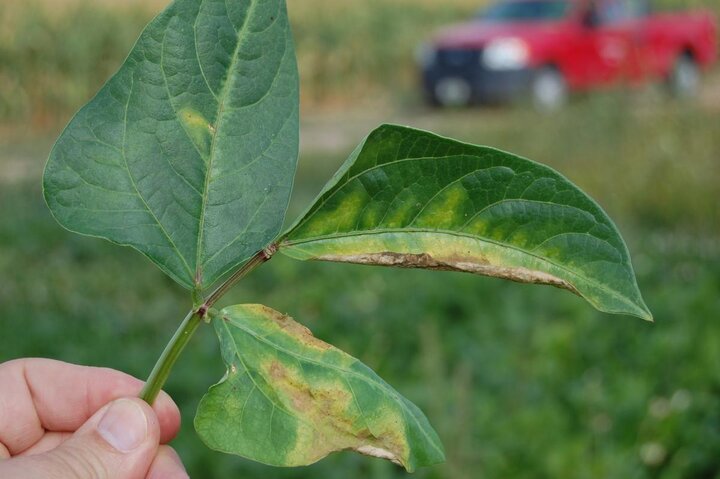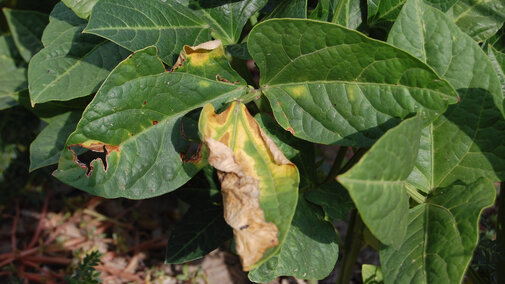
There is growing interest in Nebraska in commercial production of new pulse crops, such as chickpeas (garbanzo beans), lentils, dry yellow peas, and cowpeas. Compared with dry beans, our knowledge of these new crops is lacking. Therefore, I have been studying diseases as they appear to better understand and plan for their management.
Ascochyta blight has been the primary disease observed on chickpeas, and a bacterial disease complex has been observed on dry yellow peas. This complex consists of several species resembling brown spot and common blight in dry beans.
The newest member of this pulse crop group is the cowpea, also referred to as the black-eyed pea. Despite its name, botanically it is a type of bean and not a true pea. While its acreage in Nebraska has not been as high as that of the dried yellow pea, there is substantial interest in using it as a rotational crop with dry beans, corn, wheat, and sugar beets.
Based on two years of disease field surveys in Nebraska, it appears cowpeas are susceptible to several bacterial diseases, similar to those faced by dry beans and yellow peas. A disease similar to bacterial wilt appears to be most common. It’s characterized by interveinal yellowing and a necrotic border.
Damage was more widespread and severe in fields after severe hail storms. Fields not exposed to storms were only affected by randomly spaced, individual infected plants, and would not have caused large yield reductions. Infections have been documented from multiple fields and counties throughout the Panhandle, stretching from Kimball to Hemingford.
I believe the disease being seen in cowpea is caused by the same pathogen (Curtobacterium flaccumfaciens) that causes wilt disease in dry beans. We have isolated bacteria with both yellow- and orange-pigmented colonies from symptomatic cowpea plants.
We also have inoculated these isolates on both cowpea and dry bean plants in the greenhouse. Resulting symptoms on both were consistent with bacterial wilt, indicating that the isolates are pathogenic on both crops.
However, there were differences in the plant response to infection between the two crops. The symptoms were more severe with dry beans than with cowpeas. Symptoms also began later after inoculation in cowpeas than in dry beans. Although both crops are apparent hosts, the cowpeas were not as severely affected, suggesting a disease tolerance that is not present in susceptible dry bean cultivars.
To my knowledge, this is the first report of this disease on cowpeas from natural field infections in the Western Hemisphere. The only other report of wilt on cowpeas that I am aware of came from Iran in 2015.
Further investigations are ongoing to confirm the identities of these pathogens, assess potential damage to cowpeas, and design methods for management.

